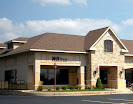In today's tough economy, small and mid-market companies are looking for ways to free up cash for acquisitions, growth, or to replace working capital lost when a bank line is not renewed because of reasons outside the business owner's control.
If you have equity in your commercial real estate, one option is to sell your property to a company that specializes in buying and managing property, then take the equity out in cash and lease back the property on a long-term lease. Compared to a refinance transaction, a sale-leaseback transaction will often yield more cash back to the company occupant.
Large companies have favored leasing their real estate for years. Dell Computer Corporation has many buildings in various locations in the U.S. but doesn't own any of them. Dell partners with a commercial real estate company to design and build them to Dell's specifications and leases the space. In Dell's case, the company doesn't want the asset and any corresponding liabilities on their balance sheet and would rather leave the building asset management to a professional organization.
Although small and mid-market companies might not have the bargaining power of Dell, they can still get cash out of their real estate to use for sales and operations purposes. For a company and property to qualify for a real estate sale-leaseback transaction, a company must be creditworthy enough to lease a building back from the new owner on a triple net lease basis for an extended period of time. The building must also be desirable for the new owner.
Requirements of a typical sale-leaseback transaction:
Single occupant building (office, manufacturing, distribution)
Located in one of the U.S. top 200 markets
Meet appraisal, property condition, and environmental surveys
Property with an acquisition cost of $4-$50 million value
Contact NAI True for more information 217-787-2800. For more information about NAI True visit our webpage www.naitrue.com
The Ultimate Guide to Buying a Home in Nashville
8 months ago

No comments:
Post a Comment